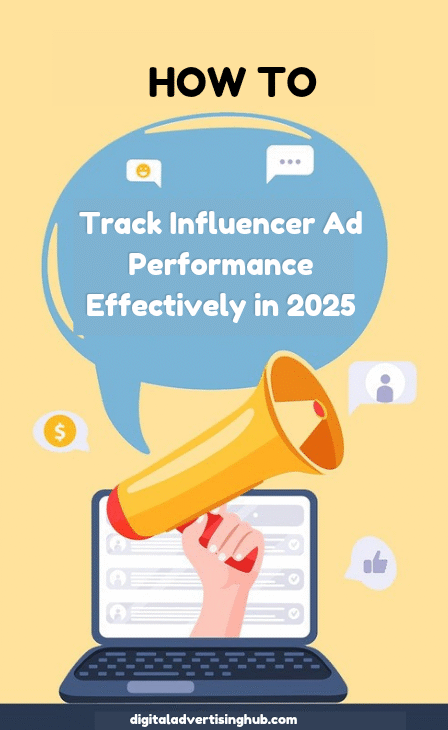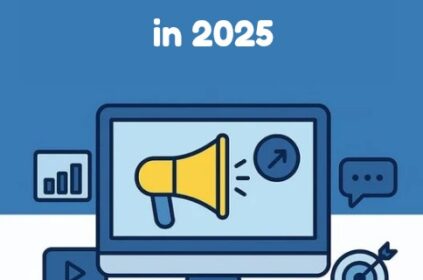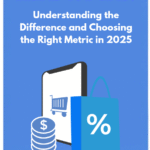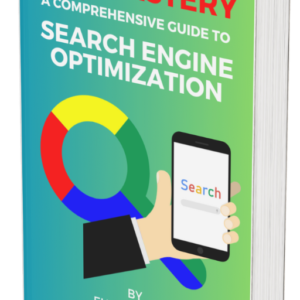Influencer marketing is no longer just a buzzword—it’s a core driver of digital advertising success.
Yet one of the biggest challenges for brands in 2025 is figuring out how to track influencer ad performance effectively when you don’t have full access to their analytics.
Platforms like Instagram, TikTok, and YouTube often limit third-party data visibility, and influencers may hesitate to share every detail of their backend dashboards.
The result? Marketers risk spending big budgets without knowing if those campaigns are delivering real ROI.
The good news is that tracking performance isn’t impossible—it just requires smarter strategies, the right tools, and a clear understanding of what really matters.
From setting measurable goals and using unique tracking links to analyzing engagement patterns and leveraging third-party platforms, there are proven ways to get accurate insights even without full transparency.
Why Tracking Influencer Ad Performance Matters

The influencer marketing industry continues to expand, with global spending projected to exceed $32.55 billion in 2025.
Despite this growth, brands now face stricter accountability from finance teams and executives who demand hard evidence that influencer campaigns deliver measurable returns.
Being able to track influencer ad performance effectively isn’t just a marketing best practice—it’s the difference between securing bigger budgets or watching them shrink.
When brands invest in creators, they aren’t paying for likes or comments alone. The true objective is to generate business results: sales, leads, or long-term customer loyalty.
Without the right tracking mechanisms, a campaign that appears successful on the surface could actually be draining resources.
For example, inflated vanity metrics like impressions or reach may mask low click-through rates or high acquisition costs.
To avoid wasted spend, marketing teams must implement structured frameworks that track influencer ad performance across every stage of the funnel.
This means integrating data from unique discount codes, UTM-tagged links, customer surveys, and multi-touch attribution models.
By combining these signals, teams can move beyond surface-level engagement metrics and focus on tangible business outcomes.
The truth is that influencers themselves also track performance to justify partnerships and negotiate future deals.
Brands that mirror this rigor align with creator priorities and ensure every partnership feels like a win on both sides.
Whether you’re working with nano-influencers or large-scale creators, disciplined tracking methods are essential to understanding what works and what needs to be optimized.
Establishing the Right Metrics for Accurate Tracking
Not all metrics are equal when it comes to measuring influencer-driven impact.
To track influencer ad performance in a way that executives trust, focus must shift away from superficial vanity numbers and toward conversion-related KPIs that reflect financial outcomes.
Metrics such as impressions, follower counts, or likes provide a sense of reach and awareness, but they do little to demonstrate how campaigns drive business growth.
Instead, marketers should prioritize click-through rate (CTR), view-through conversions, cost per acquisition (CPA), and return on ad spend (ROAS).
According to the 2025 Influencer Marketing Hub Benchmark Report, campaigns optimized around these deeper KPIs saw a 28% lift in purchase intent compared to those focused solely on reach.
Attribution is also critical. Brands must use last-click, first-click, and multi-touch attribution models to paint a full picture of customer journeys.
For instance, while one influencer may not close a sale directly, their content could be the first touchpoint that initiates interest.
By combining attribution windows—such as 24-hour look-backs for impulse purchases and 7-day windows for considered buys—teams capture a more accurate impact profile.
Another overlooked element is customer sentiment. Tracking influencer ad performance should include qualitative insights such as comment analysis, shares, and saves.
These interactions indicate resonance and trust, which often precede conversions. Sentiment also predicts whether content will continue to generate value when repurposed into retargeting campaigns or customer relationship management flows.
By clearly mapping funnel stages to specific metrics, marketers gain clarity and alignment.
Executives no longer question the ROI of influencer programs because every stage of the customer journey is accounted for in measurable terms.
Proven Tools and Platforms That Simplify Tracking
Tracking influencer ad performance effectively in 2025 requires more than spreadsheets—it depends on automation, integration, and real-time analytics.
Fortunately, platforms now exist to eliminate guesswork and provide precise visibility into campaign outcomes.
Tools like Shopify Collabs, Grin, and Aspire provide creators and brands with dashboards that link ad spend directly to conversions and revenue.
These platforms integrate seamlessly with commerce backends, meaning that every click and sale can be traced back to a specific creator’s content.
For teams scaling across multiple influencers, automation through these tools ensures no data is lost in manual handoffs.
On the analytics side, pairing creator data with Google Analytics 4 or Looker Studio allows teams to consolidate insights into one central dashboard.
This makes it possible to compare influencer-driven sales against other paid media channels like search or social ads, ensuring that budget decisions reflect cross-channel performance.
Artificial intelligence has also become a core part of the process. According to recent research, 92% of brands are already using or exploring AI to optimize influencer workflows.
AI-powered tools can predict which creators will deliver the best ROI, automate UTM link creation, and even flag anomalies like click fraud.
This predictive capability saves money and ensures ad budgets are spent on the partnerships most likely to succeed.
For smaller teams, even a well-structured Excel sheet can serve as a starter tool.
By logging creator handles, campaign URLs, spend, clicks, and conversions, marketers can calculate CPA and ROAS without needing expensive software.
While manual, this method works as long as inputs remain standardized and carefully monitored.
The key is consistency. Whichever platform or system you choose, using it across all influencer campaigns ensures you can benchmark, compare, and scale results without confusion.
Revenue and Cost Tracking for Full Transparency

One of the most common mistakes in influencer marketing measurement is underestimating costs or overestimating revenue.
To track influencer ad performance accurately, both sides of the ROI equation must be captured comprehensively.
Revenue should reflect only the sales directly attributable to influencer content.
This means relying on unique discount codes, tracked links, or post-purchase surveys to confirm whether customers were influenced by the campaign.
Without these identifiers, it’s too easy to overstate revenue and mislead financial teams.
On the cost side, brands must account for every expense, not just influencer fees.
Product seeding, shipping costs, agency commissions, platform transaction fees, and paid amplification all need to be included in the total.
Leaving out even small expenses creates artificially inflated ROI figures that don’t hold up under scrutiny.
Consider this simple example: a skincare brand spends ₦3 million on creator fees, ₦1 million on TikTok Spark Ads, and another ₦500,000 on product shipping.
If tracked revenue totals ₦10 million, the correct ROI formula is (10 − 4.5) ÷ 4.5 × 100 = 122%. While still strong, that’s a significant difference from the 150% ROI marketers might mistakenly claim if shipping costs were ignored.
Transparency at this level builds trust. When finance teams see that every cost and every revenue source has been accurately accounted for, they are more likely to approve expanded influencer budgets.
In fact, brands that adopt disciplined revenue and cost tracking report up to a 21% increase in finance approval for future campaigns, according to Salesforce’s 2025 marketing guide.
Ultimately, full cost and revenue tracking ensures that influencer campaigns are measured with the same rigor as any other paid advertising channel.
How CRM and Attribution Data Strengthen Tracking
CRM integration is one of the most overlooked opportunities in influencer measurement.
Most brands stop at campaign-level reporting, but to truly track influencer ad performance, order-level data must connect back to individual customer profiles.
When influencer-driven purchases flow into a CRM, marketers can analyze customer lifetime value, repeat purchase rates, and subscription patterns.
This deeper insight often reveals surprising results. For instance, a nano-influencer might deliver fewer immediate conversions than a macro-influencer but attract customers who spend more over time.
Without CRM-linked attribution, that valuable nuance would remain hidden.
Tools like Ruler Analytics, HubSpot, and Salesforce enable closed-loop attribution by syncing UTM data, coupon codes, and order IDs directly with customer records.
According to Salesforce’s 2025 performance tracking report, companies using this approach improved revenue attribution accuracy by 21%.
This integration also helps answer executive questions around cross-channel performance.
When influencer data sits in the same dashboards as paid search and email results, comparisons become objective.
The debate shifts from whether influencer ads work to how much budget they deserve relative to other channels.
Over time, these insights can guide more sophisticated budget allocation strategies, ensuring spend flows to the creator partnerships and content types with the strongest downstream impact.
Predictive Tracking and Scenario Planning
Looking ahead, predictive analytics has become an indispensable tool for brands serious about scaling influencer partnerships.
Instead of relying solely on historical campaign data, marketers now use simulations to forecast potential outcomes before contracts are even signed.
According to the 2025 Influencer Marketing Hub report, 58% of enterprise brands now feed historical creator data into predictive tools to set performance guarantees.
These models can project best-, worst-, and average-case outcomes by running thousands of simulations that account for variables like ad fatigue, seasonality, and creative quality.
This approach reduces risk and allows teams to structure smarter deals with influencers, including performance bonuses or claw-back clauses.
It also provides executives with greater confidence because they see potential results quantified in advance.
For example, if predictive modeling shows a 70% probability that ROI will exceed 120% and less than a 5% chance of dropping below break-even, finance teams are more willing to greenlight larger budgets.
Predictive tracking doesn’t replace post-campaign analysis, but it establishes realistic expectations upfront and ensures all stakeholders align on success thresholds.
When actual campaign results arrive, they can be evaluated against pre-agreed benchmarks rather than debated endlessly.

Repurposing Content to Extend Value
Another way to maximize measurement accuracy is by extending the lifespan of influencer content.
Too often, brands treat posts as one-time assets when, in reality, they can be repurposed across multiple channels to stretch ROI.
Negotiating multi-platform usage rights during contract discussions allows brands to re-run influencer ads as paid campaigns, email banners, or website testimonials.
This practice not only amplifies reach but also makes tracking more efficient since the same piece of content generates performance data across touchpoints.
Shopify’s 2025 benchmarks show that campaigns re-using top-performing influencer content in email flows deliver 1.6× higher revenue per recipient compared to brand-shot creative.
Beyond higher returns, this method reduces production costs and strengthens consistency across the customer journey.
When influencer-generated content is repurposed strategically, performance data compounds over time.
Instead of evaluating one post in isolation, marketers can track how the same asset contributes to conversions across multiple funnel stages. This broader perspective transforms content from a cost line item into a scalable asset.
Conclusion
Tracking influencer ad performance in 2025 demands discipline, integration, and forward planning.
From choosing the right KPIs and attribution models to adopting advanced tools and predictive analytics, every step contributes to a more transparent and accountable system.
Brands that treat influencer campaigns with the same rigor as other paid media channels gain lasting advantages: higher budget approvals, stronger ROI, and more strategic partnerships with creators.
As customer journeys grow increasingly complex, clear and accurate tracking ensures influencer marketing evolves from an experimental tactic into a proven performance engine.
The takeaway is simple: measure what matters, capture every cost, and integrate results across systems.
Do this, and tracking influencer ad performance becomes less of a challenge and more of a competitive edge.










